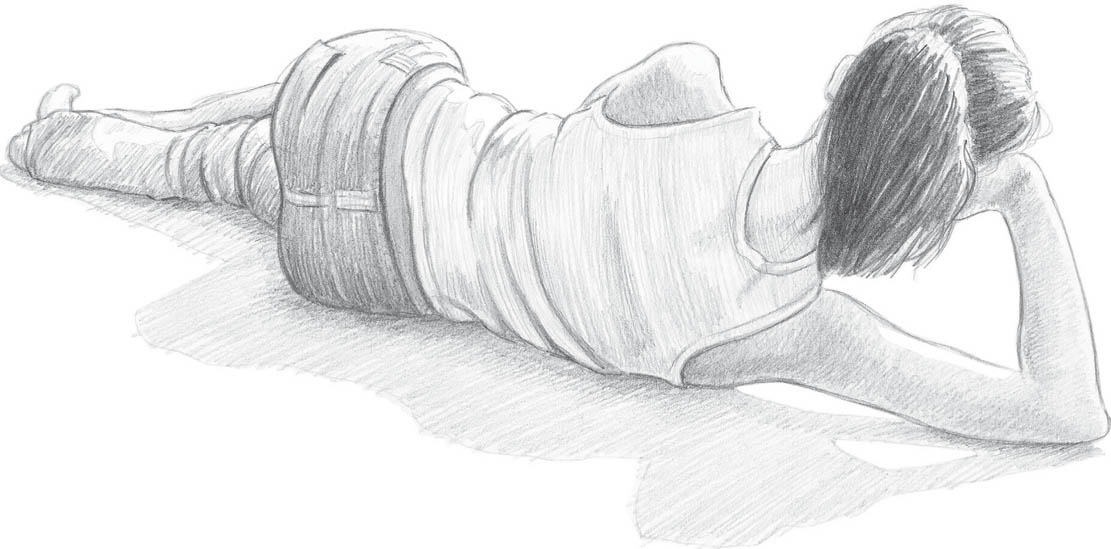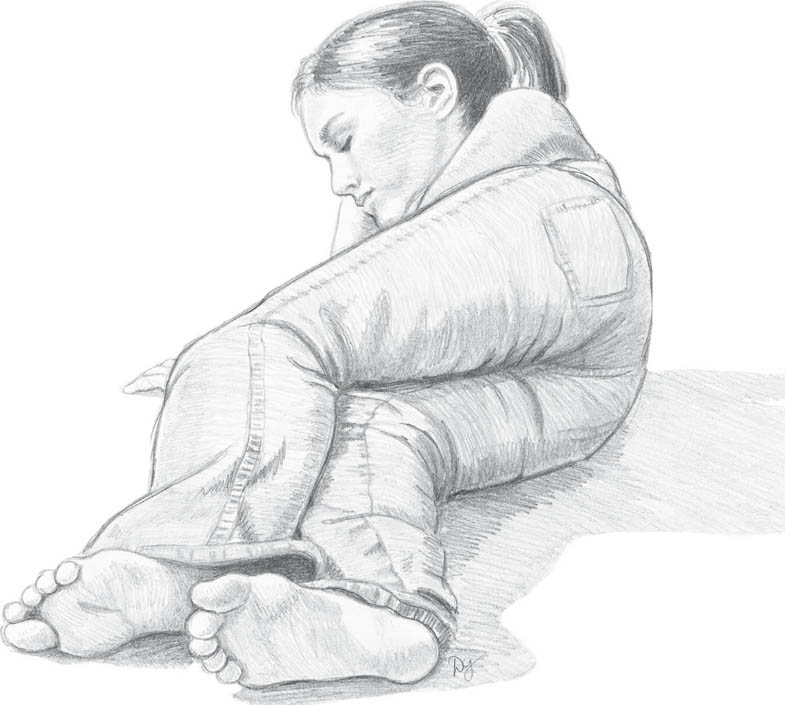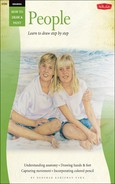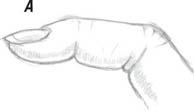To achieve realistic depth in your drawings, it’s important to understand foreshortening. Foreshortening refers to the visual effect (or optical illusion) that an object is shorter than it actually is because it is angled toward the viewer—and that objects closer to the viewer appear proportionately larger than objects farther away. For example, an arm held out toward the viewer will look shorter (and the hand will look larger) than an arm held straight down by the subject’s side. When foreshortening something in a drawing, be sure to draw the object the way you really see it—not the way you think it should look. Foreshortening helps create a three-dimensional effect and often provides dramatic emphasis. Study the examples here to see how foreshortening influences their sense of depth.

SIDE VIEW In this view, the young woman’s limbs are not distorted because the view is directly from the side, not at an angle. Her torso, head, and legs are all at roughly the same distance from the viewer. The fingers of her left hand are somewhat fore-shortened because they are turned toward the viewer.

ANGLED VIEW In this view, the head is closer to the viewer than the feet. The thighs seem to disappear behind the hips. Only part of one foot is visible, and it is relatively small due to foreshortening. The right arm supporting the head is not distorted by perspective because the full length is parallel with the side of the picture plane (i.e., not angled toward or away from the viewer). The torso is slightly distorted by foreshortening; the shoulders are closer to us and appear a little larger in comparison with the hips.
STRAIGHT -ON VIEW Now the legs are extended directly toward the viewer—so the legs are foreshortened, making them appear much shorter than they really are. This distortion creates the illusion that the feet are much closer to the viewer than the rest of the body. The torso, head, and arms are all on the same plane, so they are in proper proportion to one another. Notice here that the stretched-out legs appear to be only about 2 heads long.

FOOT TO HEAD VIEW Here the feet are closest to the viewer, and the head is farthest away, so the feet appear relatively larger than they would normally. The lower legs are foreshortened because they are angled directly toward the viewer. Most of the torso and the arms are hidden behind the legs—remember that you shouldn’t draw what you can’t see!

BACK VIEW WITH ANGLED HEAD AND ARM In this view, most of the body is on the same plane (and parallel to the picture plane), but the head and arms are angled slightly away from the viewer, so they appear relatively small when compared with the rest of the body.




